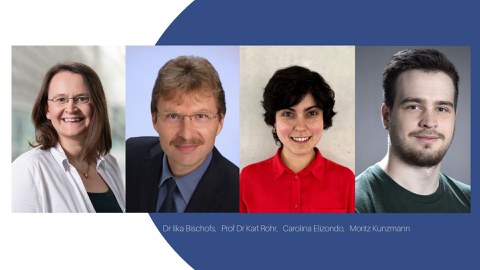Form-function relationships in the development of Bacillus subtilis fruiting bodies
- Dr. Ilka Bischofs Max-Plank-Institut für Terrestrische Mikrobiologie, BioQuant Universität Heidelberg.
- Prof. Dr. Karl Rohr Heidelberg University, BioQuant, IPMB, Biomedical Computer Vision Group.
Natural isolates of the endospore-forming model bacterium Bacillus subtilis show complex multicellular traits. Similar to plants, out of a spore of B. subtilis a 3D macroscopic multicellular structure can emerge that produces many more spores - a fruiting body. Different cell types partake in the formation of a fruiting body and its substructures.
In this project, we will study how cell-type specific functions support the formation of biofilm wrinkles (“function drives form”) and how macrocolony architecture affects the production of spores (“form drives function”).
With the help of cell-type specific fluorescent reporters, we will image processes at the level of the entire macrocolony and at the level of its substructures down to individual cells (spores). We will develop computer-based image analysis methods based on deep learning in order to quantify cellular state transitions in space and time. With this approach – and other methods - we will test different hypotheses regarding the formation of fruiting bodies by targeted genetic manipulations of B. subtilis.
This will reveal whether and how these genetic elements contribute to emergent properties during multicellular development.
| Researchers |
| Carolina Elizondo (PhD Student) |
| Moritz Kunzmann (PhD Student) |
Visit Us
Biomedical Computer Vision Group
Contact Us
Max-Plank-Institut für Terrestrische Mikrobiologie
BioQuant Universität Heidelberg
Email ilka.bischofs@bioquant.uni-heidelberg.de
BioQuant Universität Heidelberg
Email carolina.elizondo@bioquant.uni-heidelberg.de

